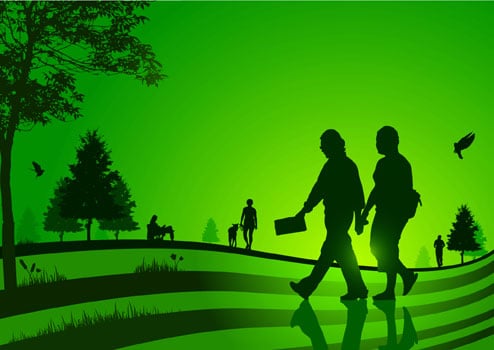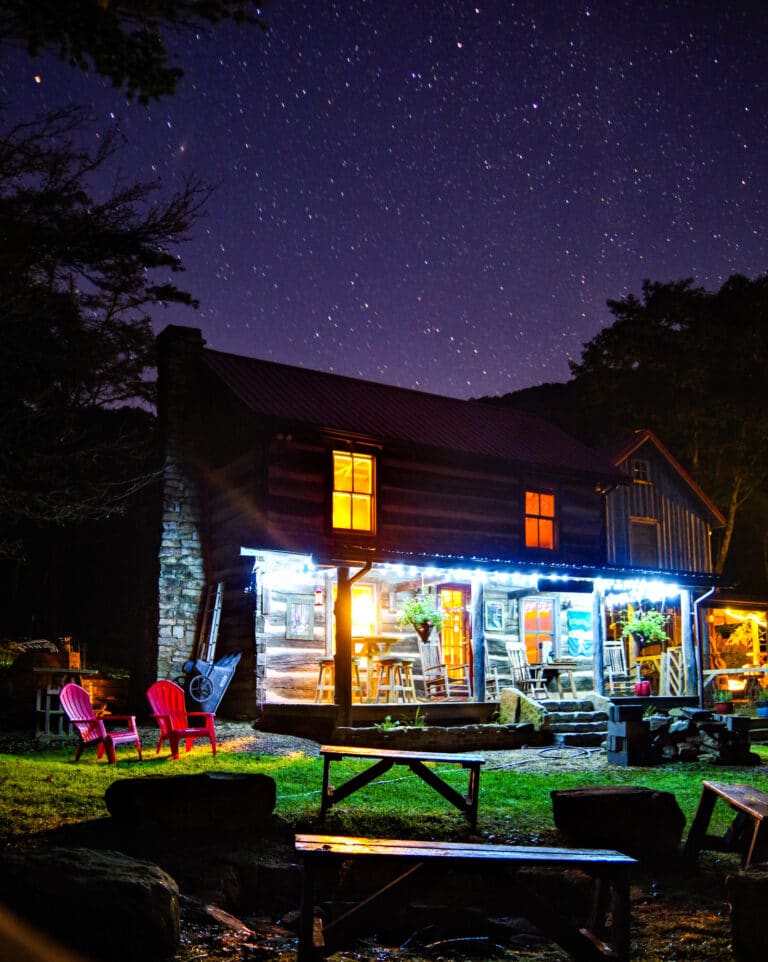There are many ways to define a sustainable community, but in general they sport healthy amounts of green space and shared vegetable gardens; mass transit, biking and walking replacing the majority of automobile traffic; and mixed use communities where schools, residences and commercial spaces are near each other and are powered by clean, renewable energy sources. Photo cred: Thinkstock
EarthTalk®
E – The Environmental Magazine
Dear EarthTalk: The term “sustainable communities” gets bantered around quite a bit today. Could you define it for me?
— Holly Parker, Mechanicsburg, PA
Kaid Benfield, Sustainable Communities program director at the Natural Resources Defense Council (NRDC), uses the term “sustainable communities” to describe places “where use of resources and emissions of greenhouse gases and other pollutants are going down, not up; where the air and waterways are accessible and clean; where land is used efficiently and shared parks and public spaces are plentiful and easily visited; where people of different ages, income levels and cultural backgrounds share equally in environmental, social and cultural benefits; where many needs of daily life can be met within a 20-minute walk and all may be met within a 20-minute transit ride; where industry and economic opportunity emphasize healthy, environmentally sound practices.”
In his March 2011 NRDC ‘Switchboard’ blog post entitled “A Trip to Sustainaville,” Benfield lays out his vision for what a model of sustainable communities could look like, with neighborhoods sporting healthy amounts of green space and shared vegetable gardens; mass transit, biking and walking replacing the majority of automobile traffic; and mixed use communities where schools, residences and commercial spaces are near each other and are powered by solar panels, geothermal heat pumps or windmills.
According to the Vermont-based Institute for Sustainable Communities (ISC), sustainable communities are “economically, environmentally and socially healthy and resilient” and meet “challenges through integrated solutions rather than through fragmented approaches.” And perhaps more important: Sustainable communities take a long-term perspective, focusing on “both the present and future, well beyond the next budget or election cycle” so that the needs of the current as well as future generations are met with adequate resources. ISC adds that the success of a community’s efforts to be sustainable depends on its members’ commitment and involvement as well as leadership that is inspiring, effective and responsive.
Some of the ways ISC has worked to further its goals include helping teach leaders from low income U.S. communities along the Gulf of Mexico how energy efficiency and ecological restoration can revitalize their otherwise struggling economies; developing community sustainability initiatives throughout war-ravaged parts of Kosovo, Serbia and Macedonia; installing green roofs on residences in the Chinese city of Shenzen as a pilot project to show how such “technologies” can yield significant carbon sequestration and other environmental benefits, and many more.
Key to any consideration of what makes a community sustainable is the acknowledgement that there is no such thing as perfection. “Sustainability is a process of continuous improvement so communities constantly evolve and make changes to accomplish their goals,” reports Sustainable Communities Online, a web-based information and networking clearinghouse started in the 1990s by a broad coalition of sustainability-oriented organizations and managed by the Washington, DC-based non-profit CONCERN Inc. Those looking to learn more about sustainable communities and what makes them tick should be sure to check out sustainable.org, Sustainable Communities Online’s information-packed website.
CONTACTS: NRDC Sustainable Communities, www.nrdc.org/sustainable-communities/; Institute for Sustainable Communities, www.iscvt.org; Sustainable Communities Online, www.sustainable.org.
EarthTalk® is written and edited by Roddy Scheer and Doug Moss and is a registered trademark of E – The Environmental Magazine ( www.emagazine.com). Send questions to: [email protected]. Subscribe: www.emagazine.com/subscribe. Free Trial Issue: www.emagazine.com/trial.








